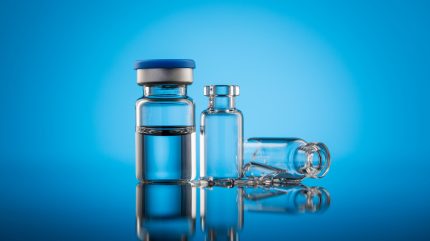
Parenteral packaging plays a crucial role in the healthcare sector, although most people may not be aware of it. Simply put, parenteral packaging is the specialised packaging used to store and protect medicines that are given by injection, bypassing the digestive system.
This includes drugs administered directly into the bloodstream, muscles, or under the skin. Because these medicines must remain sterile and safe to prevent infections or contamination, the packaging must meet very high standards.

Discover B2B Marketing That Performs
Combine business intelligence and editorial excellence to reach engaged professionals across 36 leading media platforms.
Understanding parenteral packaging helps us appreciate the care and precision involved in delivering safe medicines to patients.
What is parenteral packaging and why does it matter?
Parenteral packaging refers to the containers and materials used to hold injectable medicines such as vaccines, insulin, antibiotics, and intravenous fluids.
Unlike tablets or capsules taken by mouth, these medicines must be delivered in a way that avoids the digestive system to act quickly or when oral intake is impossible.
Common types of parenteral packaging include glass vials, plastic ampoules, pre-filled syringes, and intravenous bags. These packages must maintain the medicine’s sterility, protect it from damage during shipping and storage, and ensure ease of use by healthcare professionals.

US Tariffs are shifting - will you react or anticipate?
Don’t let policy changes catch you off guard. Stay proactive with real-time data and expert analysis.
By GlobalDataThe importance of parenteral packaging lies in patient safety. Since injections bypass the body’s natural barriers, any contamination can lead to serious infections or complications.
Therefore, the packaging must prevent microbial contamination, keep the drug stable, and allow precise dosing.
Key features and materials used in parenteral packaging
The materials and design of parenteral packaging are carefully chosen to preserve the quality of injectable medicines. Glass is the most common material for vials and ampoules because it is non-reactive and provides an excellent barrier against gases and moisture.
However, advances in plastic technology have introduced high-quality polymers that are durable, lighter, and less prone to breakage.
Sterility is paramount. Each package is sterilised using methods such as gamma radiation, steam, or ethylene oxide to ensure no harmful microorganisms remain. The packaging is then sealed tightly with rubber stoppers, aluminium caps, or tamper-evident seals that protect the contents until use.
Another essential feature is compatibility. The packaging material must not interact chemically with the medicine, which could reduce effectiveness or produce harmful substances.
For example, certain drugs can react with plasticizers in some polymers, so careful testing is required.
User-friendly design is also considered. Pre-filled syringes, for example, reduce preparation time and minimise dosing errors, improving patient safety and convenience. Infusion bags and tubing are designed for easy connection to intravenous lines.
Challenges and innovations in parenteral packaging
Despite its importance, parenteral packaging faces several challenges.
One major issue is ensuring sustainability without compromising safety. The healthcare sector generates a significant amount of plastic waste from single-use packaging, prompting research into recyclable or biodegradable alternatives.
Another challenge is preventing contamination. Even tiny defects in packaging can lead to leaks or allow bacteria to enter. Strict quality control and advances in inspection technology help reduce such risks.
Innovations in smart packaging are also emerging. For example, some packages now include sensors or indicators that show if the medicine has been exposed to incorrect temperatures, ensuring that only safe products reach patients.
Tamper-evident features have improved to provide clear signs if packaging has been opened or altered.
Furthermore, improved materials that combine the strength of glass with the lightness and flexibility of plastics are being developed. These hybrid materials aim to reduce breakage and weight during transport while maintaining sterility and chemical compatibility.
Looking ahead
Parenteral packaging is a vital but often overlooked part of modern medicine. It ensures that injectable drugs remain sterile, stable, and safe from production to patient use.
By protecting these medicines in specially designed containers made from glass, plastic, or advanced hybrid materials, parenteral packaging supports effective treatment and patient safety worldwide.
With ongoing advances addressing environmental concerns and technological innovations, the future of parenteral packaging promises to be both safer and more sustainable.
Next time you or someone you know receives an injection, remember the important role packaging plays in delivering that medicine safely.





